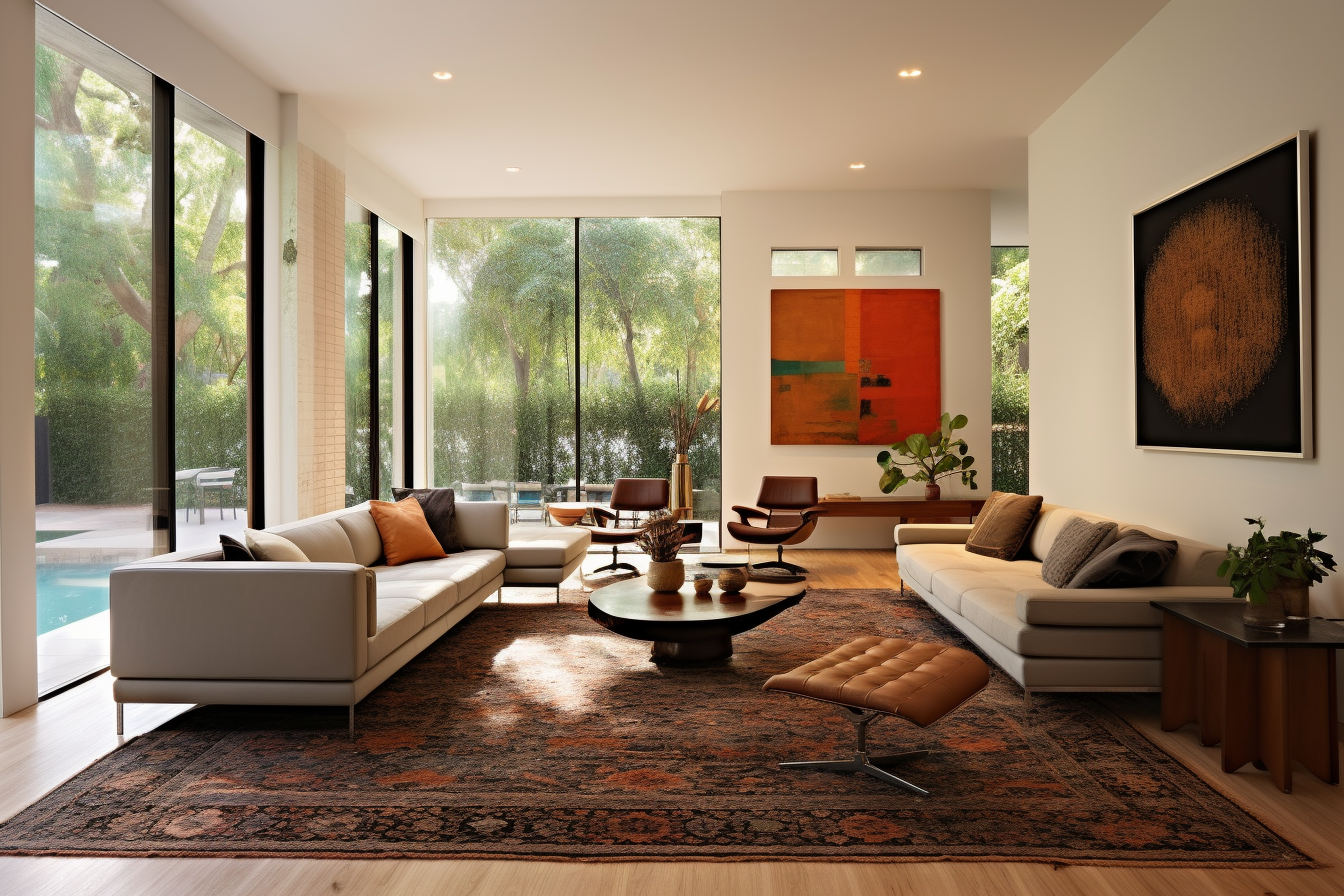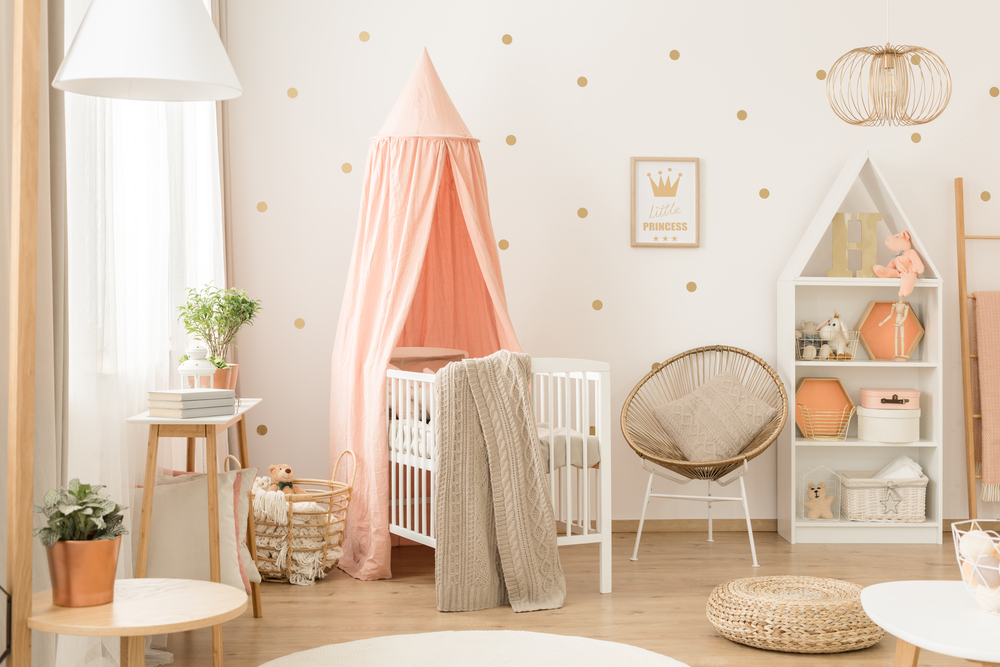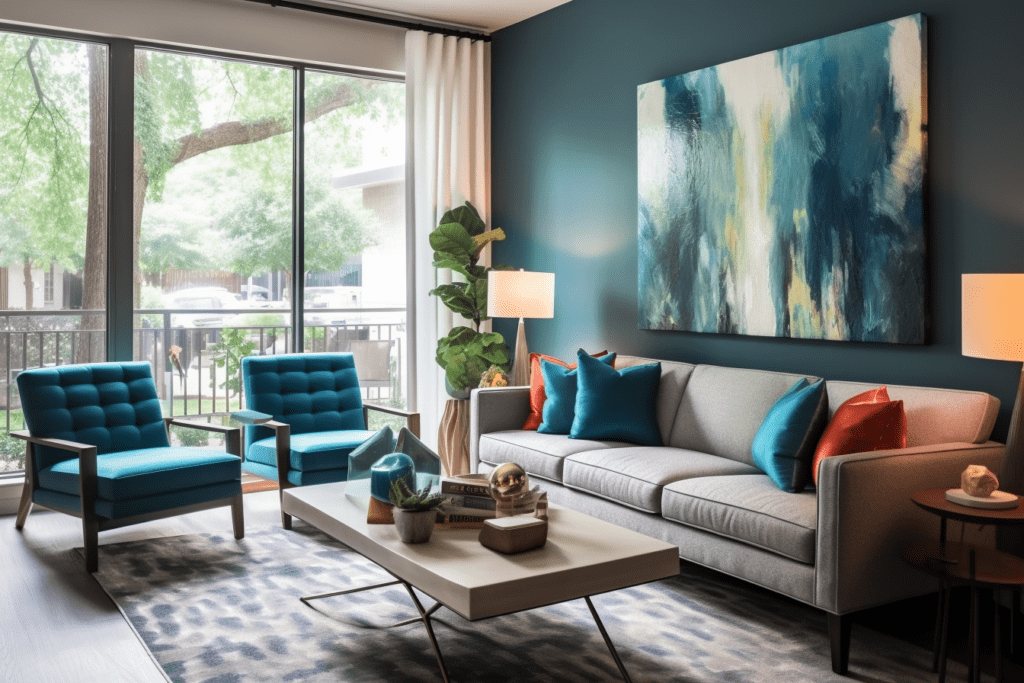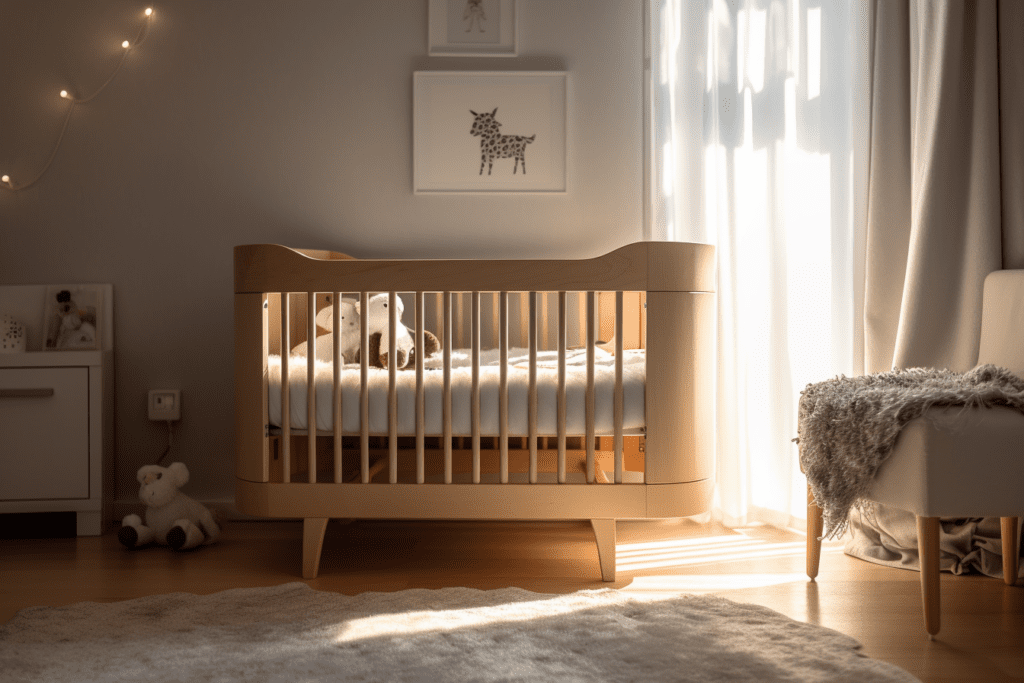Welcoming a new baby into your home is an extraordinary experience filled with joy, anticipation, and a whirlwind of emotions. As a parent, you want the best for your little one, and creating a baby-friendly home environment is an essential part of that journey.
A baby-friendly home goes beyond just a place to live; it’s a haven that fosters growth, nurtures development, and ensures the utmost safety and comfort for your precious bundle of joy. From the moment your baby takes their first breath, they rely on you to provide a space that meets their basic needs, stimulates their senses, encourages exploration, and establishes a strong foundation for their overall well-being.
In this article, we will guide you through designing a baby-friendly home environment that meets your baby’s needs and reflects your personal style and values. From creating a safe and cozy nursery to incorporating nature-inspired elements, we will delve into various aspects that contribute to a nurturing and stimulating space for your little one.
Understanding the Importance of a Baby-Friendly Home
Creating a baby-friendly home environment is crucial for the well-being and development of your little one. Safety is a top priority, as babies are naturally curious and need a secure space to explore. Baby-proofing, using non-toxic materials, and securing furniture are essential measures to ensure their safety.
A nurturing and comfortable atmosphere is also vital. Babies rely on their environment for security and connection. Incorporating soft colors, gentle lighting, and cozy textures creates a soothing space where your baby feels safe and loved.
In addition, organizing your home to establish dedicated areas for feeding, sleeping, and play helps provide structure and routine. It also reduces stress and enhances efficiency when attending to your baby’s needs. Promoting cognitive and sensory stimulation through age-appropriate toys, colors, and textures supports their development and natural curiosity.
Ultimately, a baby-friendly home environment fosters safety, comfort, stimulation, and emotional connection. By prioritizing these aspects, you create a space that supports your baby’s growth and lays the foundation for a happy and healthy life. Remember that your home is not just a physical space, but a nurturing sanctuary where your baby can thrive and flourish.
Designing a Safe Nursery
Designing a safe nursery is crucial for creating a baby-friendly home environment. It’s where your baby will spend a significant amount of time, so it’s essential to ensure a secure and comfortable space for them.
Start by selecting a crib or bassinet that meets the latest safety standards. Choose a sturdy design with proper spacing between slats to prevent entrapment. Position the crib away from windows, cords, and blinds to avoid accidents. Anchoring furniture and shelving units to the wall prevents tipping hazards.
Consider incorporating a changing station within the nursery as your baby grows. Use a changing table with safety features such as raised edges and safety straps. Keep essential supplies within reach, but out of the baby’s reach, to prevent accidents.
Designing a safe nursery provides a secure and protected space that promotes your baby’s well-being and development. Regularly inspect the nursery for any potential hazards and make necessary adjustments as your baby grows and becomes more mobile.
Baby-Proofing Your Entire Home
Baby-proofing your home is crucial for creating a safe and baby-friendly environment. Take proactive measures to minimize potential hazards and ensure your baby’s safety throughout your home.
Conduct a thorough assessment, room by room, to identify dangers. Secure furniture to prevent tipping accidents and install safety gates at staircases. Cover unused electrical outlets and use cord shorteners to keep cords out of reach.
In the kitchen, install stove guards and childproof locks for cabinets and drawers. Place safety latches on the refrigerator and oven doors. Use toilet locks and nonslip mats in the bathroom.
Secure heavy furniture and appliances to prevent tipping. Anchor bookshelves, televisions, and dressers to the wall. Cover sharp corners with guards or bumpers.
By taking these baby-proofing measures, you create a safe environment for your baby to explore and grow. Regularly reassess and update your baby-proofing as your baby develops new skills and becomes more mobile.
Creating a Calm and Soothing Atmosphere
Creating a calm and soothing atmosphere is essential for a baby-friendly home environment. By incorporating elements that soothe their senses and promote relaxation, you can help your baby feel calm and content.
Choose soft and gentle colors such as pastels or muted tones. Opt for calming hues like blues, greens, and lavender. Maximize natural light during the day and use dimmable lighting options in the evenings.
Use soft and plush materials for bedding and incorporate tactile elements like stuffed animals. Add baby-safe plants to create a sense of tranquility. Consider adding white noise or soothing sounds to mask background noises.
By focusing on creating a calm and soothing atmosphere, you provide a peaceful sanctuary for your baby to relax and thrive. Pay attention to their individual preferences and adjust the environment accordingly. With a nurturing and soothing atmosphere, your baby will feel safe and content in their home environment.
Promoting Sensory Stimulation
Promoting sensory stimulation is crucial for creating a baby-friendly home environment. By providing a variety of sensory experiences, you can support your baby’s cognitive development and encourage their natural curiosity.
Use contrasting colors and patterns in the nursery to catch your baby’s attention. Incorporate age-appropriate toys and books with vivid colors and engaging images. Fill your home with soothing music or lullabies to create a calming atmosphere. Introduce toys that produce gentle sounds or musical notes.
Provide a variety of textures through soft blankets, plush toys, and textured surfaces for your baby to explore. Incorporate sensory play mats or fabric books with different textures. Create a pleasant aroma in the nursery using natural scents like lavender or chamomile.
Promoting sensory stimulation through toys, activities, and experiences helps your baby develop their cognitive and motor skills. Offer a balance of stimulating and calming experiences, observing your baby’s reactions and preferences.
Promoting sensory stimulation creates an enriching environment that supports your baby’s exploration, learning, and development. Embrace the joy of discovery together with your baby as they engage their senses in their surroundings.
The Role of Natural Light
Natural light is a crucial element in creating a baby-friendly home environment. It has significant benefits for your baby’s health, well-being, and development.
Exposure to natural light helps regulate your baby’s sleep-wake cycle, promoting better sleep quality and more regular sleep patterns. It also supports the production of vitamin D, which is essential for bone health and the immune system.
Maximize natural light by incorporating large windows, skylights, or glass doors in your home design. Position your baby’s nursery or play area in a room that receives ample sunlight. Use window coverings to regulate the amount of light and prevent harsh glare.
Natural light creates a pleasant and inviting atmosphere, enhancing the colors and textures in your baby’s environment. Consider options for controlling light levels, such as sheer curtains or blinds.
By utilizing natural light, you can create a bright and healthy space where your baby can thrive. Embrace its benefits and design your home to maximize its presence, supporting your baby’s sleep, health, and overall well-being.
Choosing Non-Toxic Materials
When creating a baby-friendly home environment, prioritize the use of non-toxic materials. Opt for low or zero-VOC paints for the walls. Choose furniture made from natural materials like solid wood or bamboo. Select organic or natural fibers for fabrics such as bedding and curtains.
In flooring and rugs, go for non-toxic options like hardwood, bamboo, or natural stone. Use non-toxic adhesives and avoid carpets treated with harmful chemicals. Be mindful of the cleaning products and opt for non-toxic, eco-friendly solutions.
By choosing non-toxic materials, you create a safe and healthy environment for your baby to grow and thrive. Prioritize natural and organic options whenever possible. Set the foundation for a healthier future by eliminating harmful chemicals from your home.
Maintaining Cleanliness and Hygiene
Maintaining cleanliness and hygiene is crucial when creating a baby-friendly home environment. By prioritizing cleanliness, you can provide a safe and healthy living space for your little one. Here are some important aspects to consider:
Regular Cleaning
Establish a routine for cleaning your home, focusing on removing dirt, dust, and allergens. Use non-toxic and baby-safe cleaning products to ensure a safe environment for your baby. Pay special attention to frequently used items like toys, high chairs, and changing tables.
Hand Hygiene
Practice good hand hygiene by washing your hands frequently, especially before handling your baby or preparing their meals. Use mild, fragrance-free soap and warm water for at least 20 seconds. If soap and water are not available, use alcohol-based hand sanitizers to keep your hands clean and free from germs.
Diaper Changing
Maintain proper hygiene during diaper changes. Clean your baby’s diaper area thoroughly using gentle wipes or a damp cloth. Properly dispose of soiled diapers in a sealed diaper pail. Remember to wash your hands before and after each diaper change to prevent the spread of germs.
By prioritizing regular cleaning, hand hygiene, and proper diaper-changing practices, you create a clean and hygienic environment for your baby. These simple steps can help minimize the risk of infections and contribute to your baby’s overall well-being.
Establishing Routines and Boundaries
Establishing routines and boundaries is crucial for creating a baby-friendly home environment. These practices provide structure, predictability, and a sense of security for your little one’s development. By incorporating consistent routines and setting clear boundaries, you promote a harmonious and nurturing atmosphere.
One important aspect is establishing a sleep schedule. Setting regular bedtimes and wake-up times helps regulate your baby’s sleep patterns and promotes healthy sleep habits. Creating a soothing bedtime routine signals to your baby that it’s time to unwind and prepare for sleep.
In addition to sleep routines, it’s important to establish boundaries as your baby grows. Setting clear rules and reinforcing them gently helps your little one understand what’s expected. Positive reinforcement and redirection techniques guide their behavior and foster a safe and respectful environment.
By prioritizing routines and boundaries, you create a stable and nurturing home environment that supports your baby’s growth. These practices foster security, healthy habits, and a positive atmosphere for your entire family.
Organizing Baby Essentials
Keeping your baby’s essentials organized is essential for maintaining a smooth and efficient daily routine. By implementing simple organization strategies, you can ensure that everything is in its place and readily accessible when you need it.
Start by setting up dedicated storage areas for frequently used items such as diapers, wipes, and clothing. Utilize storage bins or baskets to keep these items neatly organized and within reach. You may also consider labeling the containers to easily locate what you need, particularly during busy moments.
Create a designated changing station that is well-stocked and conveniently located. Arrange diapers, wipes, diaper rash cream, and clean clothes in a caddy or on nearby shelves. This setup enables you to change your baby’s diaper efficiently without having to search for essential items.
Sort your baby’s clothes by size and type to make dressing them easier. Use drawer dividers or small bins to separate different clothing items, such as onesies, pants, and socks. This organization method allows you to quickly find the right outfit without rummaging through a messy drawer or closet.
Designate a specific area for feeding-related items such as bottles, formula, and bibs. Utilize shelves or cabinets to keep these items organized and within reach. Having a well-organized feeding area ensures that you can easily access the essentials during feeding times, making the process smoother and more enjoyable for both you and your baby.
Consider using toy bins or baskets to categorize toys based on type or age appropriateness. This not only keeps the play area tidy but also makes it easier for your baby to find and engage with their toys. Additionally, rotating toys periodically can keep playtime fresh and prevent clutter from accumulating.
By implementing these organizational strategies, you can create a well-structured and functional space that allows for easy access to baby essentials. An organized environment not only saves you time and reduces stress but also promotes a safe and enjoyable home for your little one.
Creating a Comfortable Feeding Area
When it comes to creating a comfortable feeding area for you and your baby, there are a few key considerations to keep in mind:
Firstly, choose furniture that prioritizes comfort and support. Invest in a chair or rocking chair with padded cushions and armrests to provide optimal relaxation during feeding sessions.
Next, ensure that all essential feeding supplies are easily accessible. Keep items such as bottles, formula or breast milk, burp cloths, bibs, and a water bottle within arm’s reach to minimize interruptions and ensure a smooth feeding experience.
Creating a soothing atmosphere is also important. Adjust the lighting in the feeding area to promote relaxation. Dim the lights or use soft, warm lighting to create a calm environment that helps both you and your baby feel at ease.
Consider using supportive pillows or nursing pillows to enhance comfort and maintain proper positioning while breastfeeding. These pillows provide additional support for your arms, neck, and back, reducing strain and discomfort during feeding.
Lastly, personalize the feeding area to make it warm and inviting. Display family photos or incorporate items that hold sentimental value. Adding these personal touches creates a familiar and comforting environment for you and your baby.
By taking these steps, you can design a comfortable feeding area that promotes relaxation, bonding, and a positive feeding experience for both you and your little one.
Promoting Cognitive Development
Promoting cognitive development in your baby is essential for their overall learning and intellectual growth. There are several strategies you can employ to foster cognitive development during their early years.
One effective approach is through interactive play. Engage in playtime activities that involve interaction, such as peek-a-boo, stacking blocks, or sorting shapes. These types of activities stimulate your baby’s senses, encourage exploration, and promote problem-solving skills.
Another important aspect is reading aloud to your baby. Reading introduces them to language, enhances their vocabulary, and improves their listening skills. Choose age-appropriate books with colorful illustrations and varied textures to capture their attention and make the reading experience enjoyable.
Encouraging exploration is also crucial for cognitive development. Create a safe and stimulating environment where your baby can interact, manipulate, and discover objects. Provide age-appropriate toys that engage their senses and promote cognitive growth.
Remember, every baby develops at their own pace, so be patient and create a nurturing environment that promotes cognitive growth. Through interactive play, reading aloud, and encouraging exploration, you can help foster your baby’s cognitive development and set them on a path of lifelong learning and intellectual abilities.
Building Emotional Connections
Building strong emotional connections with your baby is essential for their emotional well-being and overall development. These connections form the foundation for healthy relationships and contribute to their social and emotional growth.
One important way to build an emotional connection with your baby is through physical contact. Taking the time to hold, hug, and cuddle your baby creates a sense of security and comfort, fostering a deep emotional bond between you both. Skin-to-skin contact, gentle stroking, and comforting touch are all powerful ways to strengthen this connection.
Being responsive to your baby’s needs and attentively listening to them is another crucial aspect of building emotional connections. Pay close attention to their cues, gestures, and expressions, and respond promptly and sensitively to their needs. By being present and attuned to your baby, you create a nurturing and responsive environment that promotes a strong emotional connection.
Engaging in positive interactions is also key to fostering an emotional bond with your baby. Smile, make eye contact, and use a soothing and affectionate tone of voice. Play, sing, and talk to your baby, creating joyful and meaningful shared experiences. These positive interactions help your baby feel loved, valued, and acknowledged, further strengthening the emotional connection between you both.
Remember, building emotional connections takes time and consistent effort. Each baby is unique, so adapt these strategies to suit your baby’s individual needs. By engaging in physical contact, being responsive to your baby’s needs, and creating positive interactions, you can foster a deep and lasting emotional connection with your baby, supporting their emotional well-being and laying the foundation for healthy relationships in the future.
Conclusion: Creating a Baby-Friendly Home Environment and Embracing Support at the Motherhood Center
Creating a baby-friendly home environment is a rewarding journey that involves careful planning, thoughtful design, and a focus on meeting your baby’s needs. By incorporating the tips and strategies mentioned in this article, you can establish a safe, nurturing, and stimulating space that promotes your baby’s growth and well-being.
However, navigating the world of motherhood can sometimes feel overwhelming, especially for new mothers. That’s where the Motherhood Center in Houston comes in. Located in the heart of the city, the Motherhood Center is a haven for new mothers, providing a range of services and support to help them navigate the early stages of motherhood with confidence and peace of mind.
At the Motherhood Center, new mothers can find a supportive community and access expert guidance on various aspects of motherhood. Whether it’s breastfeeding support, postpartum care, or baby care classes, the center offers a comprehensive range of services tailored to meet the unique needs of each mother and baby.
Moreover, the Motherhood Center goes beyond just providing practical assistance. It offers a nurturing and welcoming environment where mothers can connect with other like-minded individuals, forming friendships and bonds that can last a lifetime. The center understands the importance of emotional well-being and strives to create a supportive space where mothers can share their joys, challenges, and experiences.
In addition to its services, the Motherhood Center also hosts events and workshops that cover a wide range of topics related to motherhood, including nutrition, self-care, and early childhood development. These events provide an opportunity for mothers to expand their knowledge, gain valuable insights, and connect with experts in the field.
As you embark on your journey of creating a baby-friendly home environment, consider reaching out to the Motherhood Center in Houston. With its range of services, knowledgeable staff, and warm community, the center can be a valuable resource for new mothers, providing the support and guidance needed to navigate the joys and challenges of early motherhood.
Remember, each mother’s journey is unique, and it’s important to trust your instincts and prioritize what works best for you and your baby. By creating a safe, nurturing, and stimulating home environment, establishing routines, building emotional connections, and accessing the support of places like the Motherhood Center, you are setting the stage for a fulfilling and enriching experience as you embark on this beautiful journey of motherhood.
FAQs
What are some essential baby-proofing measures to consider?
Baby-proofing measures may include securing furniture, covering electrical outlets, installing safety gates, and storing hazardous items out of reach.
How can I promote sensory stimulation in my baby’s environment?
You can promote sensory stimulation by introducing age-appropriate toys, engaging in interactive play, incorporating different textures, and providing opportunities for exploration.
Why is natural light important in a baby-friendly home?
Natural light helps regulate your baby’s circadian rhythm, promotes healthy sleep patterns, enhances mood and well-being, and supports vitamin D synthesis.
What materials should I look for when choosing non-toxic baby products?
Look for products made from organic or natural materials, free from harmful chemicals such as phthalates and BPA, and certified as safe for babies.
How can the Motherhood Center in Houston support new mothers?
The Motherhood Center offers a range of services and support, including breastfeeding assistance, postpartum care, baby care classes, community events, and expert guidance on various aspects of motherhood.






